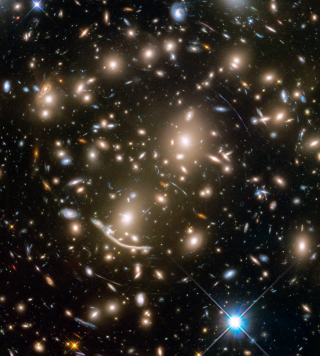Bibcode
Lucchini, Scott; D'Onghia, Elena; Aguerri, J. Alfonso L.
Referencia bibliográfica
Monthly Notices of the Royal Astronomical Society
Fecha de publicación:
6
2024
Número de citas
14
Número de citas referidas
12
Descripción
The distribution of moving groups in the solar neighbourhood has been used to constrain dynamical properties of the Milky Way for decades. The kinematic bimodality between the main mode (Hyades, Pleiades, Coma Berenices, and Sirius) and Hercules can be explained by two different bar models - via the outer Lindblad resonance of a bar with a high pattern speed (~55 km s-1 kpc-1), or via the corotation resonance of a bar with a low pattern speed (~40 km s-1 kpc-1). Recent works directly studying the kinematics of bar stars and gas flows near the centre of the Galaxy have converged on the low pattern speed model. In this paper, we independently confirm this result by using Gaia DR3 to directly study the variation of Hercules across Galactic azimuth. We find that Hercules increases in Vϕ and becomes stronger as we move towards the minor axis of the bar, and decreases in Vϕ and becomes weaker as we move towards the major axis of the bar. This is in direct agreement with theoretical predictions of a low pattern speed bar model in which Hercules is formed by the corotation resonance with stars orbiting the bar's L4/L5 Lagrange points.
Proyectos relacionados

Evolución de Galaxias en Cúmulos
Las estructuras en el Universo, a todas las escalas de masa, se han formado de una forma jerárquica y principalmente producidas por fusiones de galaxias. Sin embargo, esta formación jerárquica de las galaxias está modulada por el entorno en el cual se crean y evolucionan. Mientras que las galaxias de campo presentan una evolución pasiva, los
Jairo
Méndez Abreu